Hildreth Meière Documentary Series - Watch Trailer
Hildreth Meière Documentary Series - Watch Trailer
Commissioned by: Associated ArchitectsArtistic Collaborator: Hartley Burr AlexanderMedium: mixed metal and enamelExecuted by: Oscar B. Bach
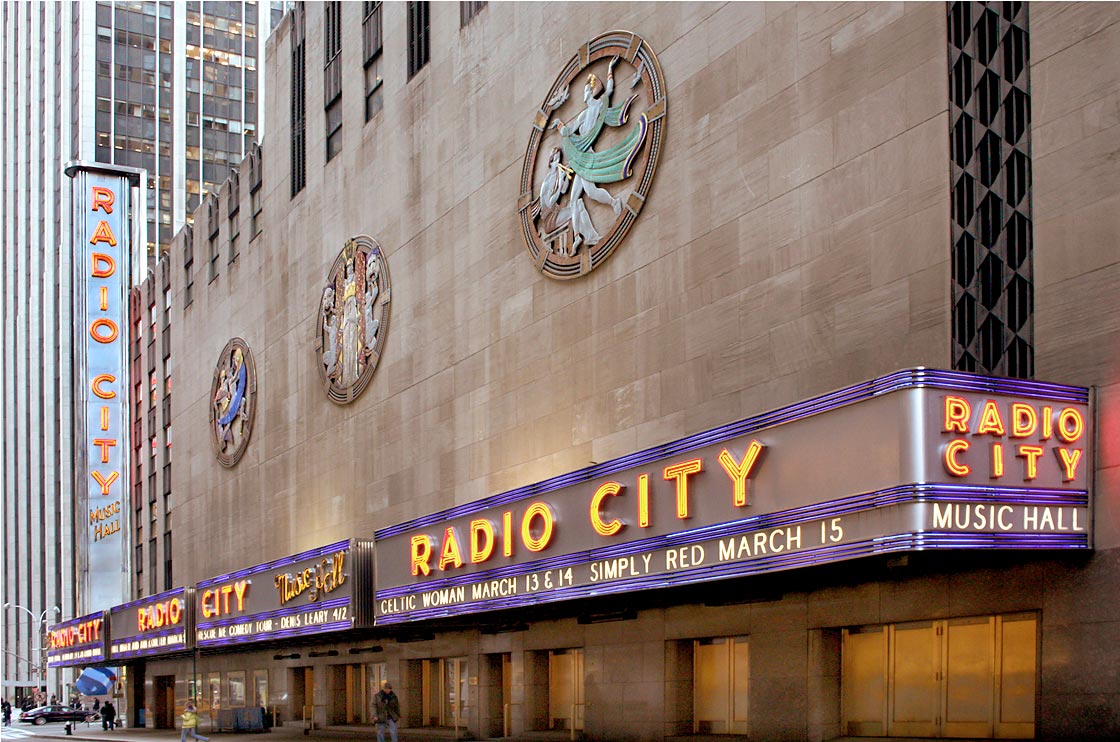
50th street facade of Radio City Music Hall with iconic Dance, Drama and Song in mixed metal and enamel
Hildreth Meière’s roundels of Dance, Drama, and Song on the 50th Street facade of Radio City Music Hall are her most visible work. Often cited as iconic examples of Art Deco design, the roundels were fabricated in mixed metal and enamel. A recently developed process that kept dissimilar metals from affecting each other when used together out of doors made it possible for Meière to select metals for their color potential and combine them on a scale never before attempted. Each roundel is eighteen feet in diameter.1
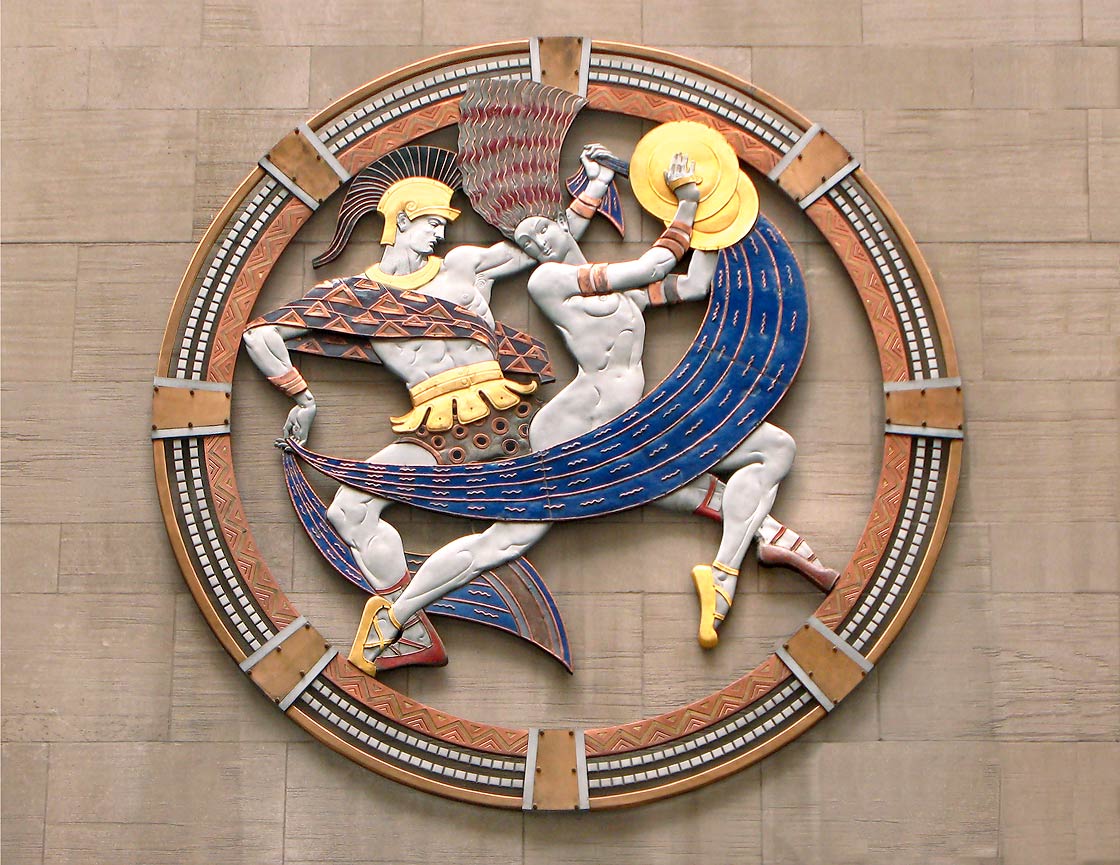
Dance
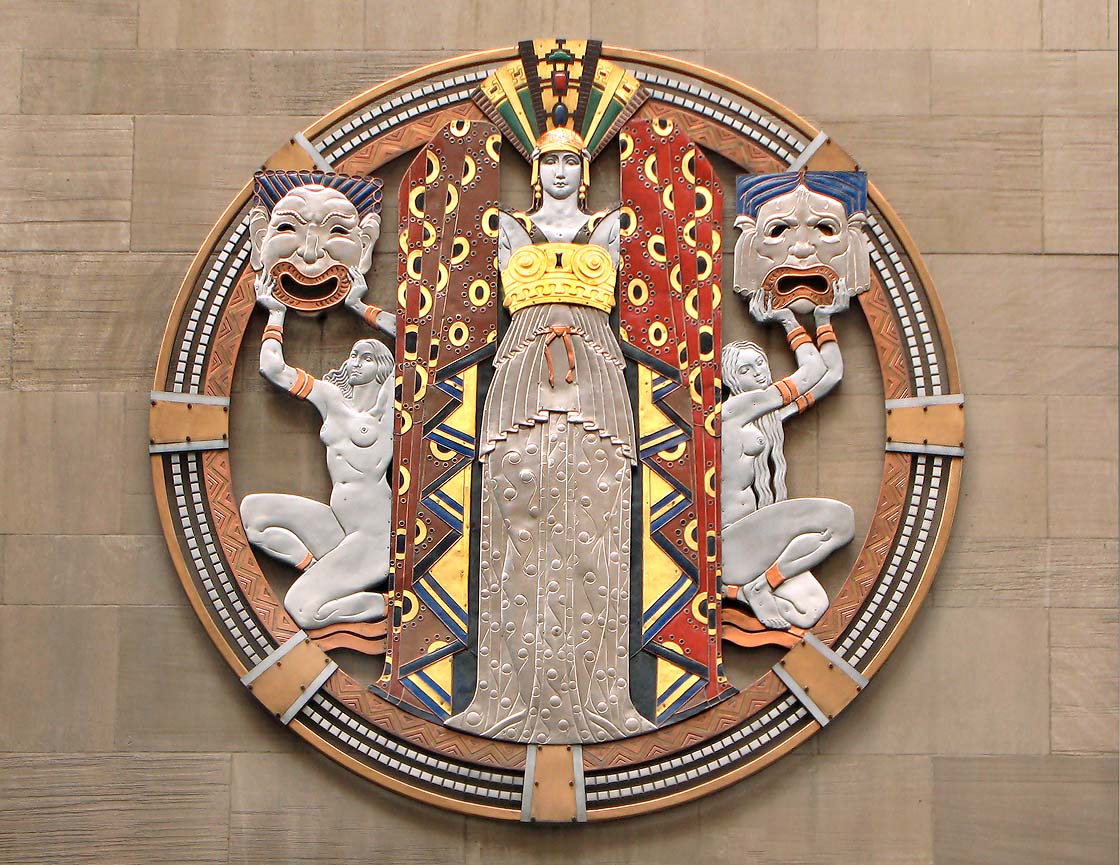
Drama
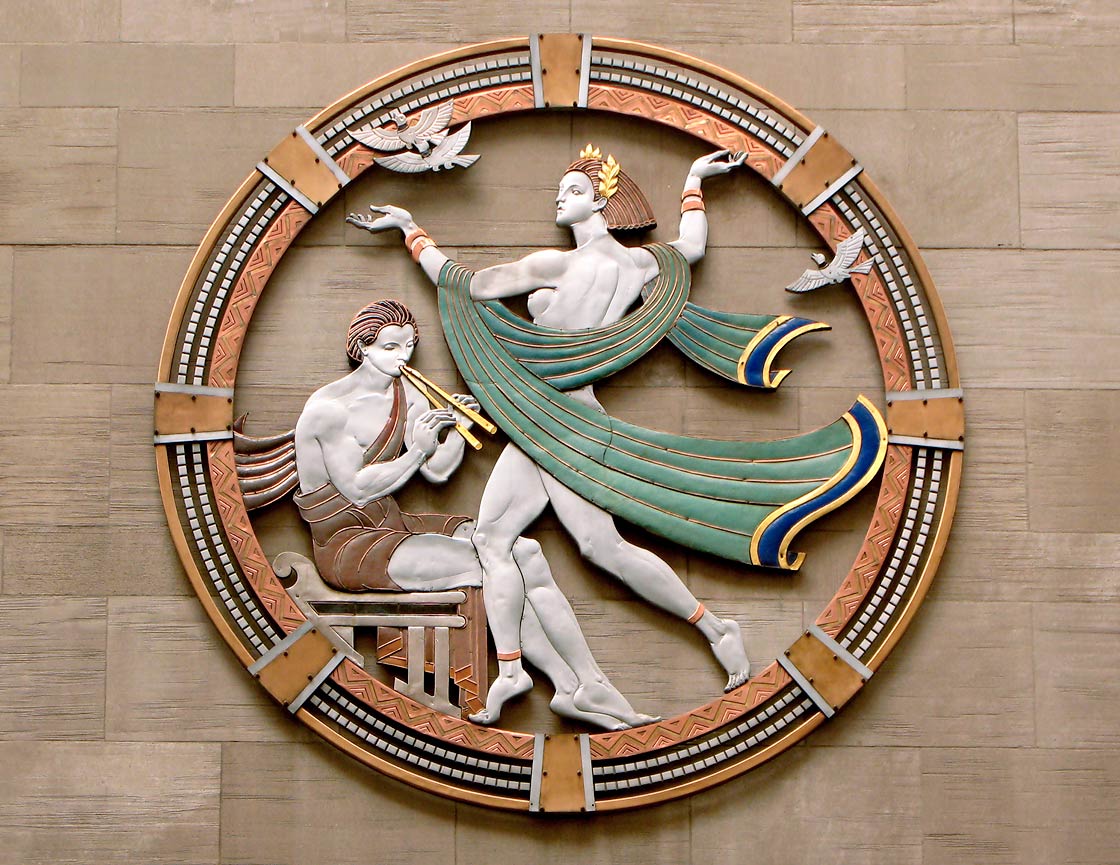
Song
Too big to be cast, the sculptures were fabricated by the master metalsmith Oscar B. Bach, who “beat them into shape in the manner of a silversmith.”2 He then added vitreous enamel colors to the figures by grinding fragments of colored glass into powder, mixing the powder with water, and applying the mixture evenly to the metal surface. During the firing that followed, the particles of glass powder fused to form a thin, colored glaze of glass enamel that adhered to the metal surface.3
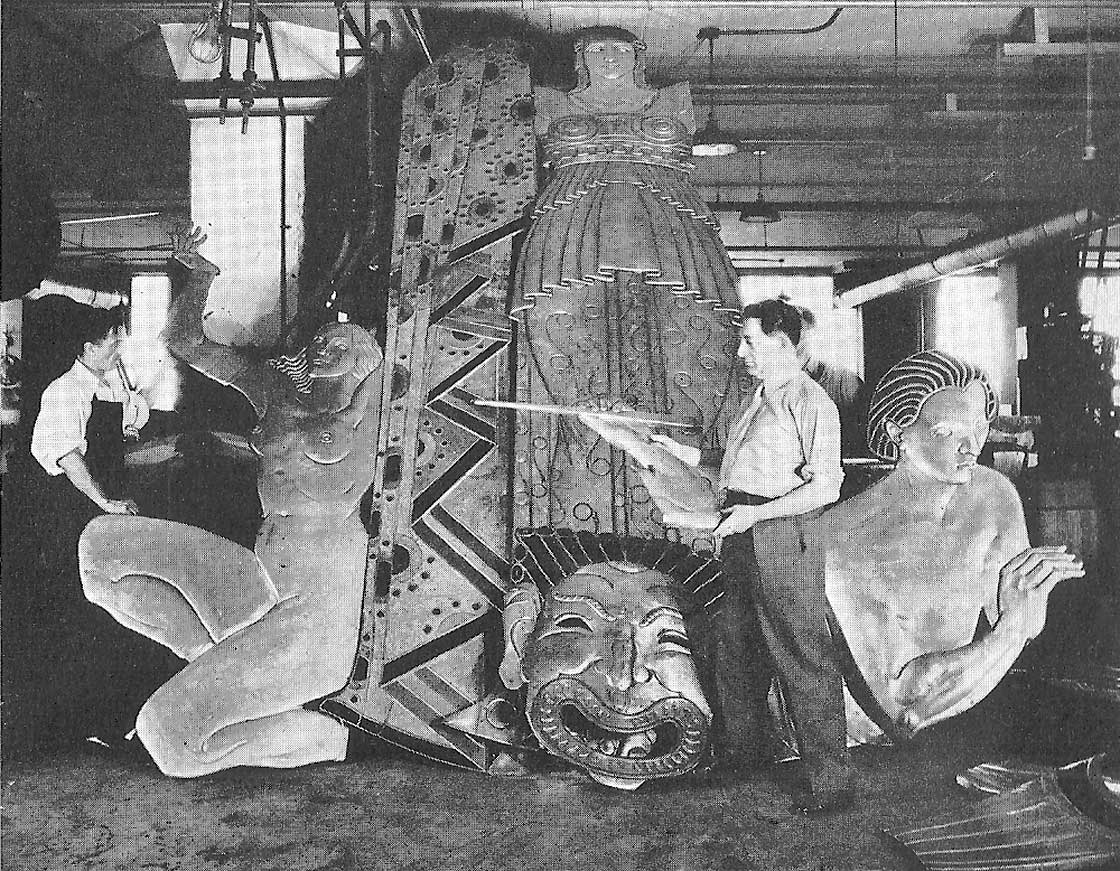
Oscar B. Bach in workshop in front of Drama, with torso of Pan, from Song, on right
While Meière was working on her design for Dance, a reporter visited her in her studio and described what she saw:
Over at the easel Mr. Lynn Fausett, Miss Meière’s assistant, was painting in detail in silvery tones the medallions with a figure representing the dance. Even that small section of the design, hardly more than four or five feet square, gave an impressive idea of the brilliantly decorative qualities that will distinguish the completed work.
Strewn around on a table were numerous small pencil sketches of the designs on transparent paper. Each sketch must be drawn many times before it is ready to be enlarged, Miss Meière said. Each of these sketches must be a piece of creative work, never mind how many times the artist has drawn and redrawn it. If two or three sketches were merely tracings of the first, the quality of the final design would be less vital.4
Meière’s designs for Dance, Drama and Song evolved gradually, as evidenced by her numerous sketches and studies. She sent sketches to her mentor from Nebraska, Hartley Burr Alexander, who had been hired to provide a unified iconography for Rockefeller Center, but had been dismissed from the project:
I know you felt they ought to be very modern, and I could have wept that you weren’t here to tell me what you meant and help me do it. The more I studied the material with Oscar Bach the more simple and classical I became, and I am afraid you will think that they are too derivative from the Greek vase sort of thing. I will have my sketches photostatted and send them out for you to see. I’m afraid it is rather too late to do more than regret their mistakes, as the designs have now been officially approved. However, I have to put some clothes on my nude figure of Song! I believe that was a Rockefeller touch.5
For a full description, see Catherine Coleman Brawer and Kathleen Murphy Skolnik, The Art Deco Murals of Hildreth Meière (New York: Andrea Monfried Editions, 2014): 150-58.
New York Herald Tribune, Sunday November 13, 1932, Real Estate Section.
Eugene Clute, “The Story of Rockefeller Center: The Allied Arts,” Architectural Forum 57: 4 (October 1932): 357. See also Brawer, Walls Speak: The Narrative Art of Hildreth Meière (St. Bonaventure, New York: St. Bonaventure University, 2009): 64-68.
Ethel C. Ince, “Designer of Huge Medallions,” The Christian Science Monitor, May 18, 1932.
Hildreth Meière, letter to Hartley Burr Alexander, April 25, 1932, Hildreth Meière Papers, Archives of American Art, Smithsonian Institution, Washington, D.C.
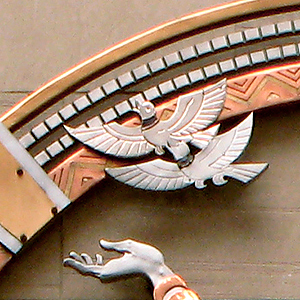
Radio City Music Hall
1260 6th Avenue
(Roundels on 50th Street)
New York, NY 10020